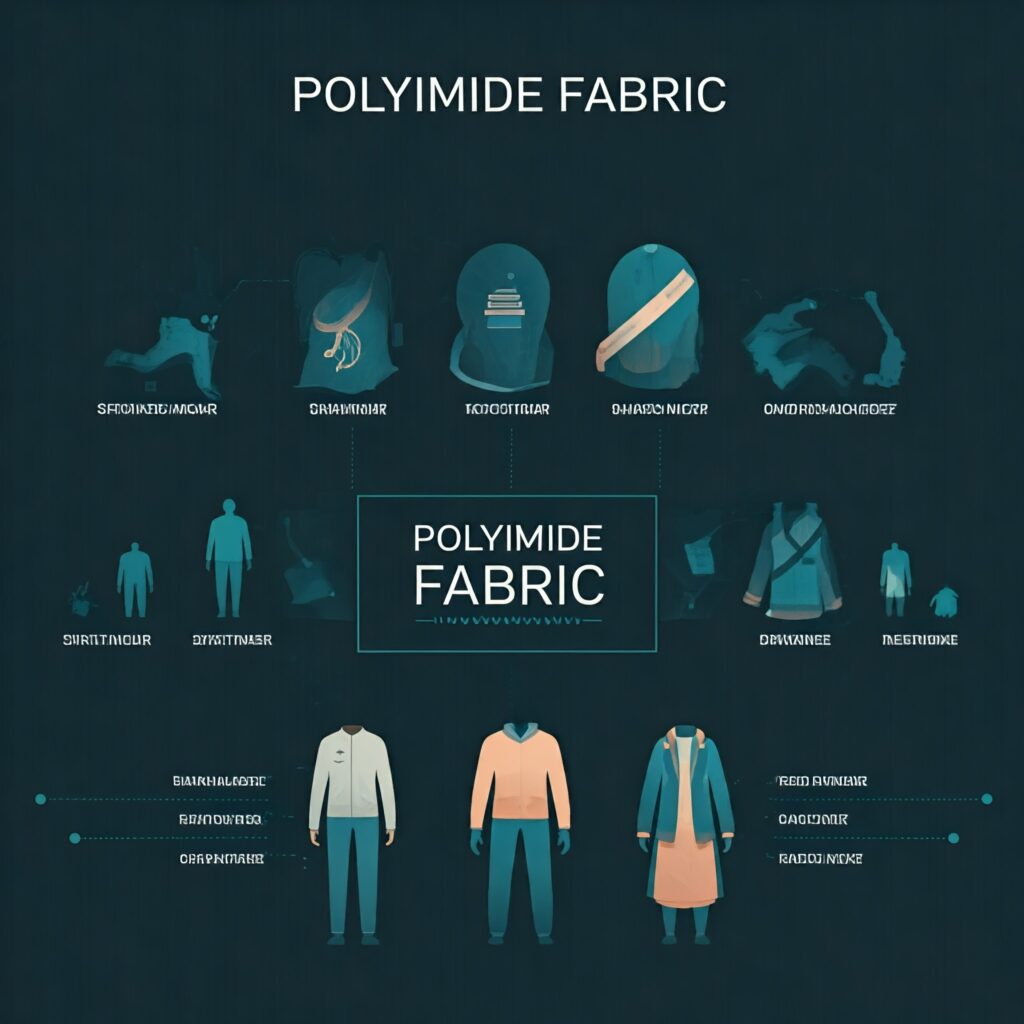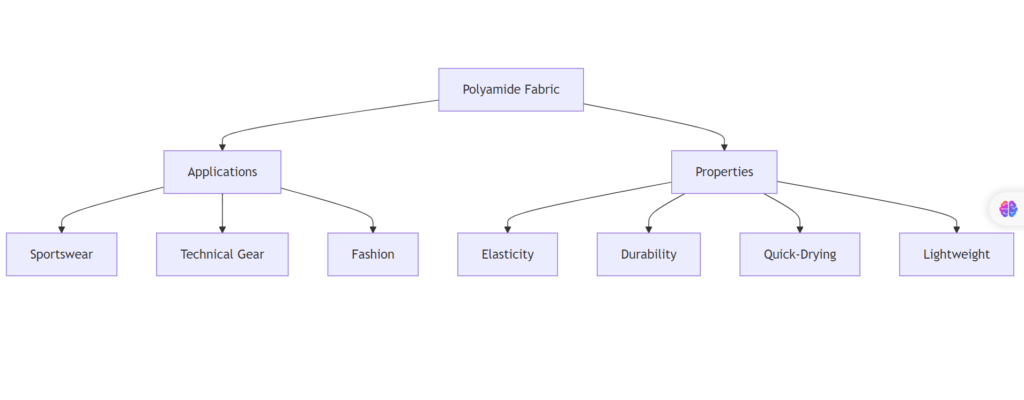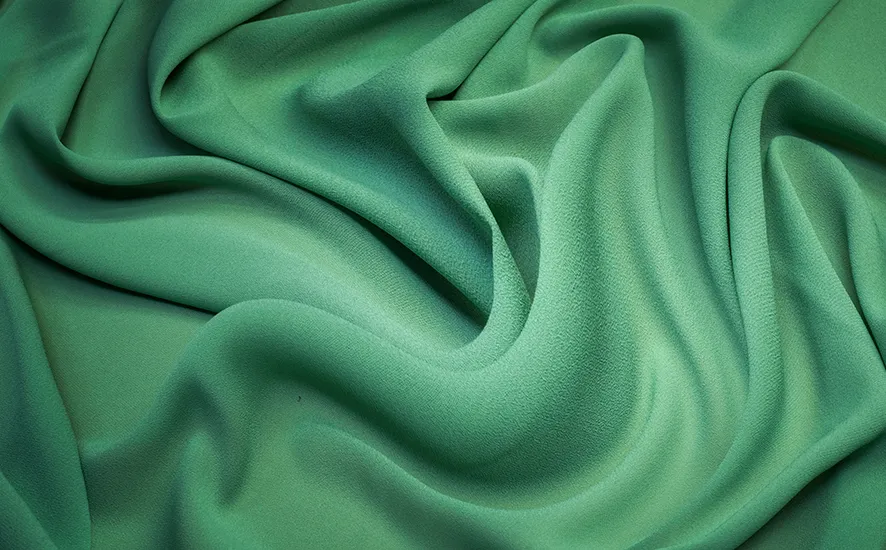Introduction to Polyamide Fabric
Polyamide fabric, widely recognized as nylon, is a groundbreaking synthetic textile material developed in the early 20th century. Known for its exceptional strength, flexibility, and versatility, polyamide has found applications in fashion, sportswear, and technical gear. In this article, we explore the properties, uses, and innovations of polyamide fabric, providing a comprehensive understanding of its value in the textile industry.
Table of Contents
What is Polyamide Fabric?

Polyamide is a synthetic polymer made from petroleum derivatives. It involves the chemical reaction of monomers that contain amide groups, forming long, chain-like molecules. The first polyamide, nylon, was introduced in the 1930s as a substitute for silk. Today, it remains a dominant material due to its wide-ranging capabilities and adaptability in various manufacturing processes.
Properties of Polyamide Fabric
Polyamide fabric stands out for its unique characteristics:
- High Durability: Polyamide fibers are exceptionally strong and resistant to wear and tear, making them ideal for products like outdoor gear and swimwear.
- Elasticity: The fabric’s natural stretchiness provides comfort and movement, perfect for sportswear and activewear.
- Lightweight: Polyamide is lightweight, allowing garments to be comfortable and less bulky.
- Quick-Drying: The hydrophobic nature of polyamide ensures that it dries faster than many other fabrics, a key feature for swimwear and athletic apparel.
- Resistant to Chemicals and Abrasions: Polyamide resists damage from oils, greases, and other chemicals, extending its lifespan.
Advantages of Polyamide Fabric
Versatility Across Industries
Polyamide’s adaptability makes it suitable for a variety of applications:
- Fashion Industry: Polyamide is used in hosiery, lingerie, and form-fitting dresses due to its elasticity and smooth texture.
- Athletic Wear: Its stretchiness, lightweight properties, and moisture-wicking abilities make it an essential material in leggings, compression garments, and gym wear.
- Technical and Outdoor Gear: From ropes and tents to performance-driven clothing like ski suits, polyamide is integral in producing durable and functional outdoor equipment.
Breathability and Comfort
Modern polyamide blends offer breathability, which keeps the wearer comfortable during physical activities. This makes it a popular choice for manufacturers designing high-performance, temperature-regulating apparel.
Applications of Polyamide Fabric

Fashion and Apparel
Polyamide is extensively used in creating fashionable yet functional clothing:
- Stockings and Tights: Due to its sheer quality and durability, polyamide is commonly found in hosiery.
- Swimwear: The quick-drying and stretch properties of polyamide make it an excellent material for swimsuits.
- Sportswear and Activewear: Polyamide’s flexibility and moisture-wicking capabilities are ideal for gym wear, yoga outfits, and running gear.
Technical Textiles
Beyond apparel, polyamide’s robustness allows it to be utilized in technical textiles:
- Ropes and Harnesses: The strength-to-weight ratio of polyamide makes it suitable for climbing gear and safety harnesses.
- Automotive and Industrial Applications: Polyamide is used in airbags, conveyor belts, and other durable products that require high resistance to abrasion.
Sustainability in Polyamide Production
Environmental Impact and Innovations
Traditionally, polyamide has faced criticism for its petroleum-based origins and environmental impact. However, innovations in the industry are changing this narrative:
- Recycled Polyamide: Companies are increasingly producing recycled polyamide fibers from post-consumer and post-industrial waste, reducing dependency on virgin resources.
- Bio-Based Polyamides: Research is ongoing to create polyamide from renewable resources, such as castor oil, to make the material more eco-friendly.
- Certifications: Modern polyamide fabrics often meet OEKO-TEX and ISO standards, ensuring that they are safe for human use and produced with minimal environmental impact.

Care Tips for Polyamide Fabrics
Maintaining polyamide garments correctly ensures longevity and performance:
- Washing Instructions: Use cold or warm water and avoid harsh detergents to prevent damage to the fibers.
- Drying Recommendations: Air drying is preferred, as high heat from dryers can affect the fabric’s elasticity.
- Storage: Store in a cool, dry place, away from direct sunlight, to prevent fading and degradation.
read also: The Secret to Fresh, Soft Clothes Without Chemicals: Eco-Friendly Fabric Softeners!
Conclusion
Polyamide fabric remains an essential textile due to its unmatched versatility, durability, and comfort. From high-performance athletic wear to eco-friendly innovations in production, polyamide continues to evolve, proving its value in the modern textile landscape. As we move towards a more sustainable future, understanding polyamide’s properties and applications can guide consumers and manufacturers in making responsible, informed choices.
Share this content:

